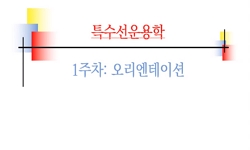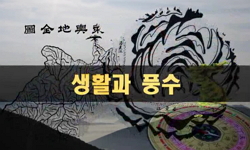The purpose of this study was to survey and analyze the origin story and the legends associated with Yongyudam(龍遊潭, Dragon Creek), its scenic and spatial description in Climbing Writings(遊山記: Yusangi Notes), its geographical and geological...
http://chineseinput.net/에서 pinyin(병음)방식으로 중국어를 변환할 수 있습니다.
변환된 중국어를 복사하여 사용하시면 됩니다.
- 中文 을 입력하시려면 zhongwen을 입력하시고 space를누르시면됩니다.
- 北京 을 입력하시려면 beijing을 입력하시고 space를 누르시면 됩니다.

‘함양 용유담(咸陽 龍遊潭)’, 전래명승으로서의 의의와 가치 구명 = ‘Yongyudam of Hamyang’, the Significance and Value as a Traditional Scenic Place
한글로보기부가정보
다국어 초록 (Multilingual Abstract)
The purpose of this study was to survey and analyze the origin story and the legends associated with Yongyudam(龍遊潭, Dragon Creek), its scenic and spatial description in Climbing Writings(遊山記: Yusangi Notes), its geographical and geological features, its surrounding remains and letters chiseled on the rocks through the field study and the study on literatures associated with it so to identify its significance and value and then to ensure justification on preservation of Yongyudam scenic site. Conclusions of this study are as follow. As the traditional scenic place ‘Geumdae-Jiri(金臺智異)’ representing Hamyang-gun(咸陽郡) depicts Mount Cheonwangbong and ‘Yongyudong Village(龍遊洞)’, ancient maps and literatures have positioned Yongyudam as the center of Eomcheon-river Creek as well as the representing scenic site of Yongyudong Village. Core images in the spatial awareness of Yongyudam described in our ancestors’ Climbing Writings Notes on Jirisan Mount are ‘geographical and scenic peculiarity associated with swimming dragons’, ‘potholes in various shapes and sizes scattered on rocks’, ‘loud sound generated by swirling from shoals’ and ‘the scenic metaphor from the dragon legend’, which have led scenic features of Yongyudam scenic site. In addition, significant scenic metaphors from legends such as ‘Nine Dragons and Ascetic Majeog’ and ‘Kasaya Fish’ as well as ‘the Holy Place of Dragon God’, the rain calling magic god have descended not only as the very nature of Yongyudam scenic site but also the catalyst deepening its mystic and place nature. On the other hand, Jangguso Place(杖?所, Place of Scholars) in the vicinity of Yongyudam was the place of resting and amusement for scholars from Yeongnam Province, to name a few, Kim Il-son, Cho Sik, Jung Yeo-chang and Kang Dae-su, where they experienced and recognized Jirisan Mount as the scenic living place. Letters Carved on the rocks at Jangguso Place are memorial tributes and monumental signs. Around Yongyudam, there are 3 stairs, letters chiseled on the rocks and the water rock artificially built to collect clean water, which are traditional scenic remains detectable of territoriality as the ritual place. In addition, The letters on the rock at Yongyudong-mun(龍遊洞門) discovered for the first time by this study are the sign promoting Yongyudam as the place of splendid landscape. The laconism, ‘It is the Greatest Water in Jirisan Mount(方丈第一山水)’ on a rock expresses the pride of Yongyudam as the representing scenic place of Mount Jirisan. Other than those, standing rocks such as Simjindae Rock, Yeong-gwidae Rock and Ganghwadae Rock show the sign that they are used as amusement and gathering places for ancestor scholars, which add significance to Yongyudam. By this study, it was possible to verify that Yongyudam in Mount Jirisan is not simply ‘the scenic place in the tangible reality’ but also has seamlessly inherited as the traditional scenic attraction spiritualized by overlapped historical and cultural values. Yongyudam, as the combined heritage by itself, shows that it is the product of the place nature as well as unique ensemble of cultural scenic attraction inherited through long history based on natural scenery. It is certain that not only the place value but also geographical, geological, historical and cultural values of Yongyudam are the essence of traditional scenic attraction, which should not be disparaged or damaged by whatever political or economic interests and logics.
국문 초록 (Abstract)
‘함양 용유담’에 얽힌 유래와 전설, 지리산유산기 속의 경관 인식, 지형지질학적 특성 그리고 주변 유구(遺構)와 바위글씨의 해석과 분석을 통해 이곳의 경관 특성을 밝히고 이를 근거로 ...
‘함양 용유담’에 얽힌 유래와 전설, 지리산유산기 속의 경관 인식, 지형지질학적 특성 그리고 주변 유구(遺構)와 바위글씨의 해석과 분석을 통해 이곳의 경관 특성을 밝히고 이를 근거로 용유담의 명승적 가치와 경관보존의 당위성을 확보하고자 시도된 본 연구의 결론은 다음과 같다. 함양의 대표적인 전래승경 ‘금대지리(金臺智異)’가 천왕봉과 용유동에 대한 묘사이듯, 고지도나 고문헌에서 또한 엄천강의 중심 ‘용유동(龍遊洞) 용유담’은 이 지역의 대표적인 승경으로서 자리매김 되어왔다. ‘구룡과 마적도사’·‘가사어’ 전설과 기우(祈雨)의 주술신인 ‘용신(龍神)의 성소(聖所)’로서의 경관적 은유는 용유담의 본질일 뿐 아니라 신령함과 장소성을 심화시키는 촉매였다. 선인들의 지리산유산기 속에 드러난 용유담의 핵심적 이미지는 ‘자맥질하는 용과 관련된 지형경관적 특이성’, ‘다양한 모습과 크기의 포트홀’, ‘와류현상에 의한 여울목의 폭음(瀑音)’ 그리고 ‘용 전설의 경관적 은유’ 등으로 이들 이미지는 용유담의 장소관성(場所慣性)을 이끌어왔다. 또한 이곳의 장구소(杖?所) 바위글씨는 김종직을 비롯하여 김일손·조식·정여창 그리고 강대수 등 지리산을 생활경관으로 체험하고 인식하였던 경상우도 사림(士林)들의 ‘장구·상영지소(杖??觴詠之所)’로서 기념비적 석문(石文)이자 추모의 표식이다. 또한 용유담 주변의 3단 층계(層階)와 ‘용유담(龍遊潭)’ 바위글씨 그리고 샘[泉]물을 모으기 위해 가공된 수반(水盤)은 제의터로서 영역성이 감지되는 전통조경적 유구이다. 더불어 본 연구를 통해 처음으로 확인된 용유동문(龍遊洞門), 방장제일산수(方丈第一山水) 등의 바위글씨는 선경지처(仙境之處) 용유담을 알리는 표식이자, 용유담이 지리산의 대표적 승경이라는 자부심의 표현이다. 그밖에 심진대·영귀대·강화대 등의 대(臺)는 옛 선인들의 풍류처이자 유계(遊契)의 흔적으로 용유담의 의의를 더해 준다. 용유담의 기묘하고 독특한 경관은 수려한 자연을 바탕으로 오랜 역사를 두고 이어져 온 장소관성의 산물이자 문화경관의 총체(總體)임을 여실히 보여준다. 본 연구를 통해 지리산 용유담은 ‘물리적 실체’ 뿐만 아니라 역사문화적 가치의 중첩을 통해 꾸준히 전승되어온 복합유산으로 명승 지정 조건에 충일(充溢)함이 확인되었다. 단언컨대 용유담이 갖는 장소성은 물론 지질지형·역사문화적 가치는 그 어떤 정치경제적 이해관계나 논리로도 폄하되거나 훼손되어서는 안 될 전래 명승의 진수(眞髓)이다.
참고문헌 (Reference)
1 안세현, "柳夢寅의 遊頭流山錄 연구―지리산 遊記의 전통과 관련하여―" 동양한문학회 24 (24): 231-258, 2007
2 정석용, "金宗直의 ‘遊頭流錄 所載 漢詩硏究" 6 : 1988
3 함양군, "함양문화총람" 2009
4 함양군지편찬위원회, "함양군지" 1981
5 함양군지편찬위원회, "함양군사" 2012
6 이중환, "택리지" 을유문화사 2006
7 이륙, "지리산 유람록: 용이 머리를 숙인 듯 꼬리를 치켜든 듯" 보고사 2008
8 최원석, "지리산 문화경관의 세계유산적 가치와 구성" 한국지역지리학회 18 (18): 42-54, 2012
9 소현수, "조선시대 「유산기」를 통해 본 전통경관 연구 : 지리산을 중심으로" 서울시립대학교 2003
10 문화재청, "전통명승 동천구곡 조사보고서" 2006
1 안세현, "柳夢寅의 遊頭流山錄 연구―지리산 遊記의 전통과 관련하여―" 동양한문학회 24 (24): 231-258, 2007
2 정석용, "金宗直의 ‘遊頭流錄 所載 漢詩硏究" 6 : 1988
3 함양군, "함양문화총람" 2009
4 함양군지편찬위원회, "함양군지" 1981
5 함양군지편찬위원회, "함양군사" 2012
6 이중환, "택리지" 을유문화사 2006
7 이륙, "지리산 유람록: 용이 머리를 숙인 듯 꼬리를 치켜든 듯" 보고사 2008
8 최원석, "지리산 문화경관의 세계유산적 가치와 구성" 한국지역지리학회 18 (18): 42-54, 2012
9 소현수, "조선시대 「유산기」를 통해 본 전통경관 연구 : 지리산을 중심으로" 서울시립대학교 2003
10 문화재청, "전통명승 동천구곡 조사보고서" 2006
11 박종관, "장수 함양의 자연환경: 장안산 백운산 월경산 괘관산 삼봉산 사두봉 조비산" 환경부 1998
12 김태형, "울산 작괘천의 포트홀에 관한 지형분석" 국립문화재연구소 46 (46): 68-77, 2013
13 문화재청, "보도자료 ‘함양 용유담’명승 지정 6개월간 보류"
14 문화재청, "보도자료 ‘함양 용유담’등 4개소 명승 지정 예고"
15 이슬기, "명승 지정상의 갈등관리방안: 함양 용유담 사례를 중심으로" 2013
16 노재현, "금석문 속 장구지소의 유형과 장소특성" 14 : 2011
17 전홍근, "가평천 포트홀의 형태 및 분포에 관한 정량 연구" 한국지형학회 18 (18): 213-221, 2011
18 전홍근, "가평천 포트홀군의 지형경관 특성" 건국대학교 2010
19 최석기, "黃俊良의 智異山 紀行詩에 대하여 -「遊頭流山紀行篇」을 중심으로-" 동방한문학회 (47) : 7-42, 2011
20 李德懋, "靑莊館全書 第49卷 耳目口心書 二"
21 "錦溪先生文集卷之一 外集"
22 張維, "谿谷集 谿谷先生集 第33券"
23 李睟光, "芝峯類說 卷二十"
24 윤호진, "漢詩에 나타난 智異山 認識의 思想的 外延과 內包" 경남문화연구원 (18) : 203-253, 2004
25 하정남, "朝鮮初期 祈雨祭의 性格 變化" 6 : 2002
26 開闢社, "智異山譜 제34호"
27 강정화, "智異山 遊山記에 나타난 조선조 지식인의 山水認識" 경남문화연구원 (26) : 255-300, 2008
28 姜大遂, "寒沙先生文集"
29 姜大延, "寒沙先生年譜"
30 金正浩, "大東地志, 咸陽郡條, 山水編"
31 金正浩, "大東地志, 咸陽郡條, 山水編"
32 노근지, "南冥 曺植의 ‘遊頭流錄’에 나타난 遊山의 의미 연구" 중앙대학교 2010
33 "http://www.yetgle.com"
34 "http://www.oneclick.or.kr"
35 "http://www.jiri99.com"
36 "http://map.daum.net"
37 "http://hanja.naver.com"
38 "http://hamyang.org"
39 "http://db.itkc.or.kr"
40 문화재청, "2011년도 문화재위원회 제11차 천연기념물분과 위원회 회의록"
동일학술지(권/호) 다른 논문
-
경복궁 인수형(鱗獸形) 서수상(瑞獸像)의 제작시기와 별간역(別看役) 연구
- 국립문화재연구원
- 김민규
- 2014
- KCI등재
-
- 국립문화재연구원
- 노재현
- 2014
- KCI등재
-
- 국립문화재연구원
- 류호철
- 2014
- KCI등재
-
- 국립문화재연구원
- 박원규
- 2014
- KCI등재
분석정보
인용정보 인용지수 설명보기
학술지 이력
| 연월일 | 이력구분 | 이력상세 | 등재구분 |
|---|---|---|---|
| 2027 | 평가예정 | 재인증평가 신청대상 (재인증) | |
| 2021-01-01 | 평가 | 등재학술지 유지 (재인증) |  |
| 2018-01-01 | 평가 | 등재학술지 유지 (등재유지) |  |
| 2015-01-01 | 평가 | 등재학술지 유지 (등재유지) |  |
| 2011-01-01 | 평가 | 등재학술지 선정 (등재후보2차) |  |
| 2010-01-01 | 평가 | 등재후보 1차 PASS (등재후보1차) |  |
| 2008-01-01 | 평가 | 등재후보학술지 선정 (신규평가) |  |
학술지 인용정보
| 기준연도 | WOS-KCI 통합IF(2년) | KCIF(2년) | KCIF(3년) |
|---|---|---|---|
| 2016 | 0.39 | 0.39 | 0.32 |
| KCIF(4년) | KCIF(5년) | 중심성지수(3년) | 즉시성지수 |
| 0.3 | 0.32 | 0.57 | 0.08 |





 RISS
RISS





